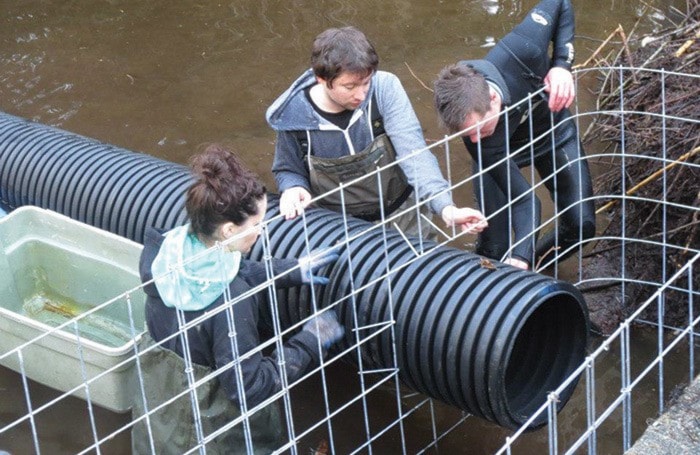By Alina Konevski
Mission Record
In a landscape especially conducive to beavers, the District of Mission is leading other municipalities with its recent adoption of humane management practices.
Although harmless, the prevalent big-toothed rodents have a habit of building dams at culverts, presenting flood risks.
Mission, like many other municipalities, has a long history of manually breaking apart dams, as well as trapping and killing beavers when breaking up dams is particularly difficult.
But in the last six months, the district has embraced methods that prevent beavers from building a dam in the first place.
“Whenever habitat and food is available, you will always have wildlife. By managing habitat, or restricting access to habitat, [the beavers] are going to relocate themselves, to find a place that’s more suitable,” explained Lesley Fox, from the Association for the Protection of Fur-Bearing Animals (APFA).
The non-profit group approached the district with a simple, non-lethal alternative for managing flooding concerns associated with beaver activity: build a wire fence around the culvert intake, interrupting the beavers’ natural instinct to build where there’s current and the sound of flowing water.
“They work awesome,” said Dale Vinnish, public works operations supervisor. “We don’t have to trap beavers. They moved elsewhere. They’re not causing a problem.”
The nine “beaver deceivers,” at $400-$600 apiece and built in one day, save the district thousands of dollars, because workers no longer have to pull apart dams.
Previously, the municipality would break down two to three dams daily, several days a week, in addition to paying for the capturing and killing of about a dozen beavers annually.
“If we weren’t trapping, we were going in continuously to break apart the dams,” said Vinnish.
Since installing the devices, no beavers have been trapped and site visits to the beaver deceivers only happens monthly to check for blockage.
Similarly, Silverdale Creek Wetlands has just built its first current diversion system.
“The problem is, with an area like Silverdale Creek Wetlands, it’s so heavily human impacted, that we’re impacting the predators of beavers … So the beaver population tends to grow fairly well,” said Stave Valley Salmonid Enhancement Society’s Jim Taylor.
With its tangle of small waterways, the wetlands offer prime viewing for beavers, birds, and other wildlife, but pose environmental management challenges.
To prevent beavers from raising the water level by damming, a large wooden box with wire mesh was installed where a pond flows out to a river that disrupts the current, and confuses the beaver. The beaver doesn’t build a dam, because he can’t figure out where to do it. Meanwhile, fish can still pass through.
“Mission has been a true success story for us here in the Lower Mainland,” said Fox. “They’ve certainly set an example for the rest of Metro Vancouver.”
AFPA volunteers check on the new water flow devices, and freely consults with municipalities, farmers, and other groups on non-lethal, long-term methods of managing animal populations, including beavers, coyotes, and raccoons.
